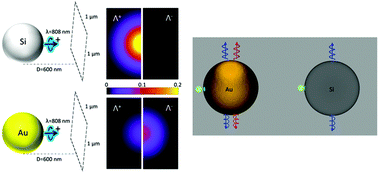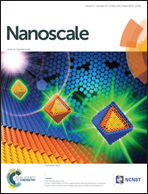Tailoring the chirality of light emission with spherical Si-based antennas
Abstract
Chirality of light is of fundamental importance in several enabling technologies with growing applications in life sciences, chemistry and photodetection. Recently, some attention has been focused on chiral quantum emitters. Consequently, optical antennas which are able to tailor the chirality of light emission are needed. Spherical nanoresonators such as colloids are of particular interest to design optical antennas since they can be synthesized at a large scale and they exhibit good optical properties. Here, we show that these colloids can be used to tailor the chirality of a chiral emitter. To this purpose, we derive an analytic formalism to model the interaction between a chiral emitter and a spherical resonator. We then compare the performances of metallic and dielectric spherical antennas to tailor the chirality of light emission. It is seen that, due to their strong electric dipolar response, metallic spherical nanoparticles spoil the chirality of light emission by yielding achiral fields. In contrast, thanks to the combined excitation of electric and magnetic modes, dielectric Si-based particles feature the ability to inhibit or to boost the chirality of light emission. Finally, it is shown that dual modes in dielectric antennas preserve the chirality of light emission.


 Please wait while we load your content...
Please wait while we load your content...